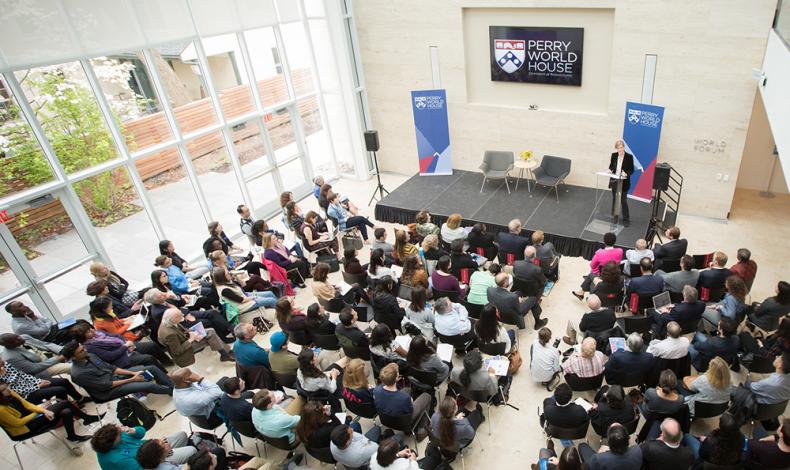At Perry World House, PennDesign Students Learn to Influence Policy

PennDesign students are connecting design work to the global scale as graduate associates at Perry World House.
When José Caléia Castro first walked past Perry World House (PWH) on Locust Walk, his friend mentioned it was “a house for the world.”
Recalling his conversation, Castro says, “I told him, ‘Oh, I will be involved with this place.’”
Soon enough, Castro, a visiting scholar at the School of Design, landed a position at PWH as a graduate associate, with about two dozen other students from various schools within Penn.
A Ph.D. candidate in urban and regional planning, with a research focus on informal urbanization processes and planning policies in the global south, Castro says the yearlong experience at PWH—which he is halfway through—has been nothing short of “inspiring.”
“If I am only in the School of Design, of course I will learn the tools of design to make things better for people,” he says. “But at Perry World House, you also learn how to apply these ideas to real life, to understand the approaches, the strategies in creating policy.”
Graduate associates at PWH, which regards itself as a hub for global engagement on campus, meet monthly for seminars, focusing on developing skills for engaging the policy community. They also write related papers for publication with the mentorship of the center’s community, including PWH visiting fellows.
Also, another major perk, notes PWH graduate associate Chandan Deuskar, a doctoral candidate in the Department of City and Regional Planning, is the preferential access to PWH events and programs, and the ability to meet in small groups with public figures who come to Penn.
“A couple months ago, the former president of Mexico was visiting Perry World House, and the graduate associates were invited to meet with him separately, in a more casual and intimate environment,” says Deuskar, whose studies focus on how politics affect planning in developing countries. “I was able to ask him a question related to my own work, which I wouldn’t otherwise have been able to do.”
Castro, Deuskar, and another PWH graduate associate from PennDesign, Liz Volchok, a master’s student in both historic preservation and city and regional planning, all mentioned that their interest in connecting their design work to the global scale was boosted by the international-specific classes and studios they’ve taken while at Penn. They also had already been attending PWH events, and thought becoming a graduate associate was a natural fit.
An “invaluable experience,” says Volchok, whose work focuses on designing spaces of equity, specifically for migrating and immigrant communities, pairing her design studies with the PWH program is proving to be beneficial. “I am getting insight into a world that I haven’t been specifically trained in.”
“It’s really helping us understand the world of politics, and how to navigate that world from the design perspective,” adds Volchok. “For better or for worse, politics always are involved in everything we will do. If you want to get your great idea passed to the right table, you need to know the process of how to get there.”
Deuskar seconds Volchok’s thoughts. “Planning by its nature is about public policy in some sense…ultimately, as planning researchers, we hope our work can inform policy decisions.”
Volchok says she also appreciates that the graduate associate program at PWH provides an outlet to connect with graduate students from other schools at the University.
“There are people from political science, from medicine, from the vet school, all these different departments,” she says. “We are sometimes nestled in our own world in design, but meeting other people outside and understanding the work they are doing is interesting. I can learn so much from all the people around the table.”
The interdisciplinary aspect lends itself to the process and importance of understanding differences, notes Castro.
“As designers, we need to keep an open mind—and a global view—when influencing policies,” he says. “It’s absolutely needed to do our job.”

